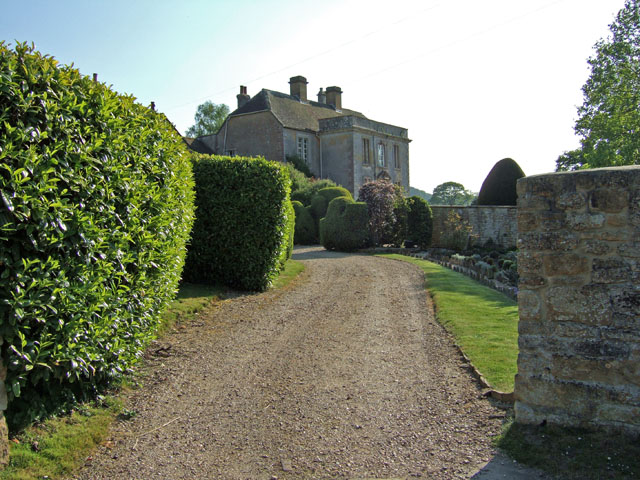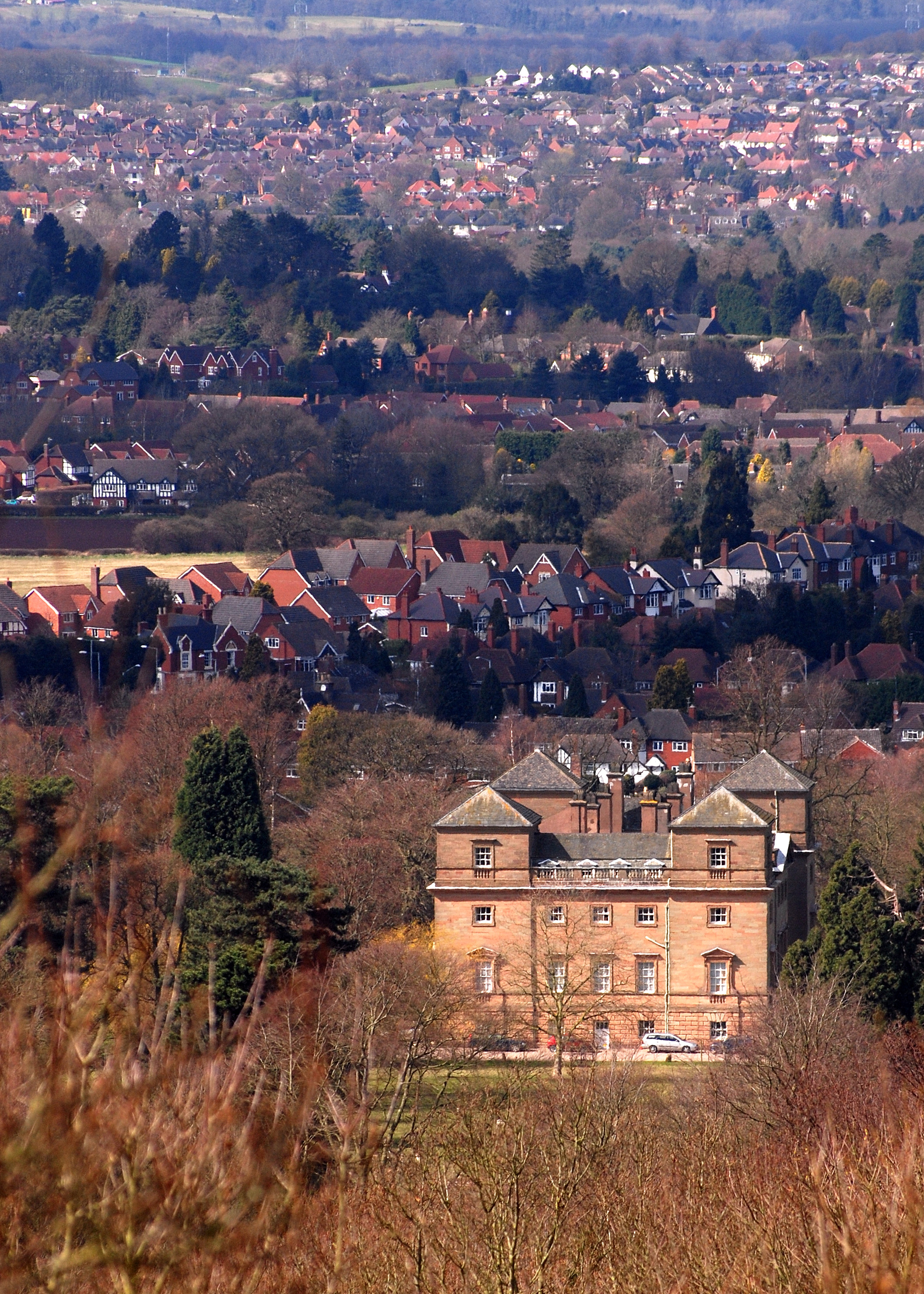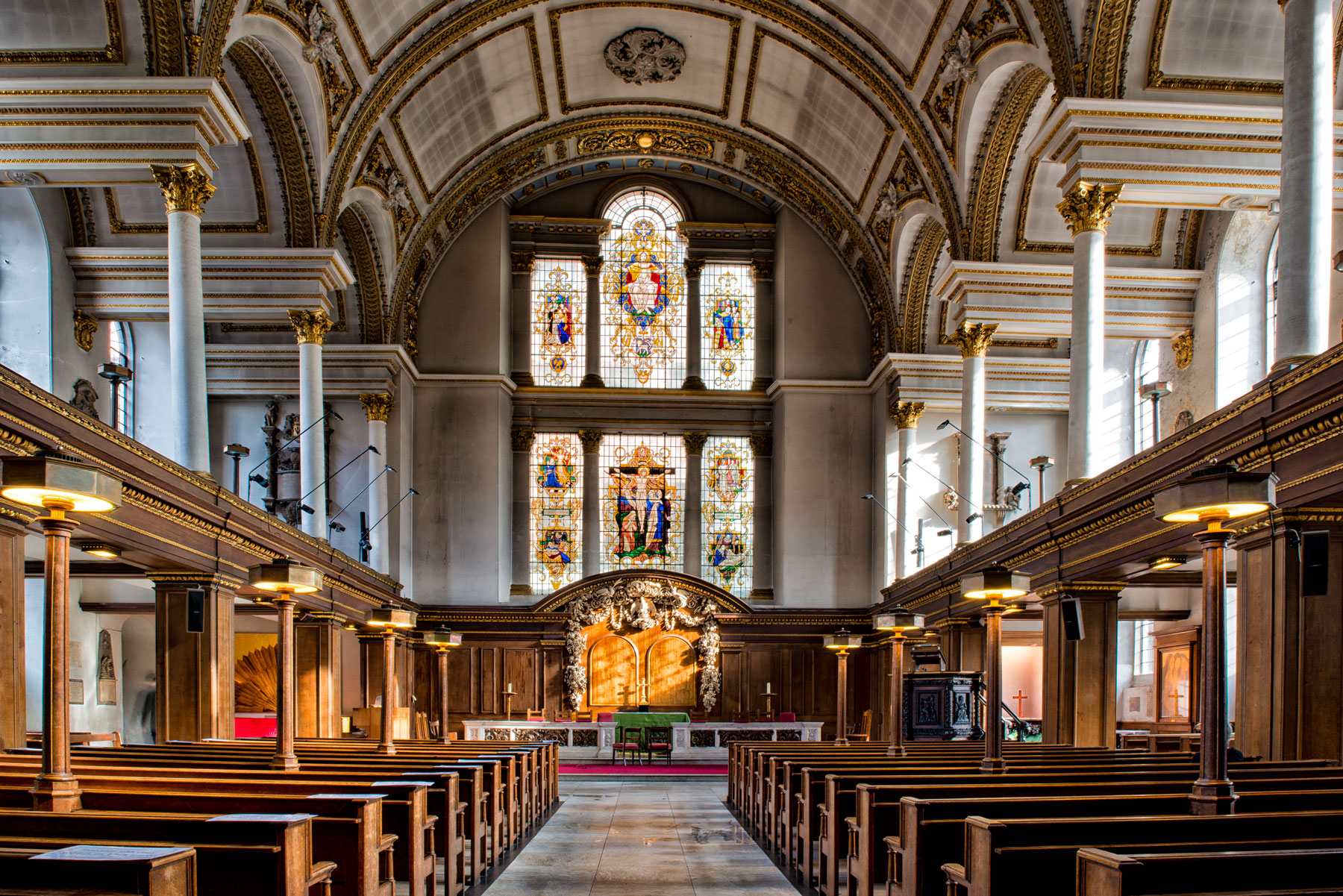|
John Carrick Moore
John Carrick Moore (1805–1898) FGS, FRS was an eminent geologist and the "last of that band of ardent field-geologists who … did so much to investigate the underground structure of the British Islands". He was also Deputy Lieutenant of the county of Wigtown. Biography John Carrick Moore was the son of James Carrick Moore and Harriet Henderson, daughter of the actor John Henderson. He was born on 14 February 1805. He was admitted to Westminster School on 18 September 1815. Then, after a period at Glasgow University (1820-23) Moore entered Queens' College, Cambridge in 1823, where he was awarded the degree of M.A. In 1827 he was fourteenth Wrangler in the mathematical tripos. Moore was admitted to the Inner Temple on 29 January 1824 and called to the Bar on 28 January 1831. But he had a greater interest in geology than in the law. In the mid-1830s he became interested in the Rhinns of Wigtownshire, near his home. He was in touch with Charles Lyell (later Sir Charles Lyell ... [...More Info...] [...Related Items...] OR: [Wikipedia] [Google] [Baidu] |
Kensal Green Cemetery
Kensal Green Cemetery is a cemetery in the Kensal Green area of Queens Park in the Royal Borough of Kensington and Chelsea in London, England. Inspired by Père Lachaise Cemetery in Paris, it was founded by the barrister George Frederick Carden.The Founding of Kensal Green Cemetery Accessed 7 February 2014 The cemetery opened in 1833 and comprises of grounds, including two conservation areas, adjoining a canal. The cemetery is home to at least 33 species of bird and other wildlife. This distinctive cemetery has memorials ranging from large s housing the rich and famous to many distinctive smaller graves and includes special areas dedicated to the very young. It has three ch ... [...More Info...] [...Related Items...] OR: [Wikipedia] [Google] [Baidu] |
Roderick Murchison
Sir Roderick Impey Murchison, 1st Baronet, (19 February 1792 – 22 October 1871) was a Scotland, Scottish geologist who served as director-general of the British Geological Survey from 1855 until his death in 1871. He is noted for investigating and describing the Silurian, Devonian and Permian systems. Early life and work Murchison was born at Tarradale Castle, Tarradale House, Muir of Ord, Ross-shire, the son of Barbara and Kenneth Murchison. His wealthy father died in 1796, when Roderick was four years old, and he was sent to Durham School three years later, and then the Royal Military College, Great Marlow to be trained for the army. In 1808 he landed with Arthur Wellesley, 1st Duke of Wellington, Wellesley in Portugal, and was present at the actions of Battle of Roliça, Roliça and Battle of Vimeiro, Vimeiro in the Peninsular War as an ensign in the 36th (Herefordshire) Regiment of Foot, 36th Regt of Foot. Subsequently under Sir John Moore (British Army officer), John Mo ... [...More Info...] [...Related Items...] OR: [Wikipedia] [Google] [Baidu] |
Alumni Of Queens' College, Cambridge
Alumni (singular: alumnus (masculine) or alumna (feminine)) are former students of a school, college, or university who have either attended or graduated in some fashion from the institution. The feminine plural alumnae is sometimes used for groups of women. The word is Latin and means "one who is being (or has been) nourished". The term is not synonymous with "graduate"; one can be an alumnus without graduating (Burt Reynolds, alumnus but not graduate of Florida State, is an example). The term is sometimes used to refer to a former employee or member of an organization, contributor, or inmate. Etymology The Latin noun ''alumnus'' means "foster son" or "pupil". It is derived from PIE ''*h₂el-'' (grow, nourish), and it is a variant of the Latin verb ''alere'' "to nourish".Merriam-Webster: alumnus .. Separate, but from the s ... [...More Info...] [...Related Items...] OR: [Wikipedia] [Google] [Baidu] |
Alumni Of The University Of Glasgow
Alumni (singular: alumnus (masculine) or alumna (feminine)) are former students of a school, college, or university who have either attended or graduated in some fashion from the institution. The feminine plural alumnae is sometimes used for groups of women. The word is Latin and means "one who is being (or has been) nourished". The term is not synonymous with "graduate"; one can be an alumnus without graduating ( Burt Reynolds, alumnus but not graduate of Florida State, is an example). The term is sometimes used to refer to a former employee or member of an organization, contributor, or inmate. Etymology The Latin noun ''alumnus'' means "foster son" or "pupil". It is derived from PIE ''*h₂el-'' (grow, nourish), and it is a variant of the Latin verb ''alere'' "to nourish".Merriam-Webster: alumnus .. Separate, but from the ... [...More Info...] [...Related Items...] OR: [Wikipedia] [Google] [Baidu] |
People Educated At Westminster School, London
A person ( : people) is a being that has certain capacities or attributes such as reason, morality, consciousness or self-consciousness, and being a part of a culturally established form of social relations such as kinship, ownership of property, or legal responsibility. The defining features of personhood and, consequently, what makes a person count as a person, differ widely among cultures and contexts. In addition to the question of personhood, of what makes a being count as a person to begin with, there are further questions about personal identity and self: both about what makes any particular person that particular person instead of another, and about what makes a person at one time the same person as they were or will be at another time despite any intervening changes. The plural form "people" is often used to refer to an entire nation or ethnic group (as in "a people"), and this was the original meaning of the word; it subsequently acquired its use as a plural form of per ... [...More Info...] [...Related Items...] OR: [Wikipedia] [Google] [Baidu] |
Compton Pauncefoot
Compton Pauncefoot is a village and civil parish in Somerset, England, situated beside the A303 road, south west of Wincanton in the South Somerset district. The parish had a population of 139 in 2011. The civil parish also includes the village with Blackford (located one mile to the east) and therefore population is based on the two villages together. Blackford parish was merged with Compton Pauncefoot on 1 April 1933. The civil parish holds a Parish Meeting twice a year and has no Parish Council. There are approximately 35 houses in the village of Compton Pauncefoot and a similar number in Blackford. Compton Pauncefoot is a designated Conservation Area. The civil parish is in the Blackmore Vale ward of South Somerset District Council and Somerset County Council. History The name of the village is believed to come from 'compton', or narrow valley, belonging to a Norman knight called Pauncefote ('Fat-bellied'). The parish was part of the hundred of Catsash. Baron Blackford, ... [...More Info...] [...Related Items...] OR: [Wikipedia] [Google] [Baidu] |
Royal Horse Guards
The Royal Regiment of Horse Guards (The Blues) (RHG) was a cavalry regiment of the British Army, part of the Household Cavalry. Raised in August 1650 at Newcastle upon Tyne and County Durham by Sir Arthur Haselrigge on the orders of Oliver Cromwell as a Regiment of Horse, the regiment became the Earl of Oxford's Regiment in 1660 upon the Restoration of King Charles II. As, uniquely, the regiment's coat was blue in colour at the time, it was nicknamed "the Oxford Blues", from which was derived the nickname the "Blues." In 1750 the regiment became the Royal Horse Guards Blue and eventually, in 1877, the Royal Horse Guards (The Blues). The regiment served in the French Revolutionary Wars and in the Peninsular War. Two squadrons fought, with distinction, in the Household Brigade at the Battle of Waterloo. In 1918, the regiment served as the 3rd Battalion, Guards Machine Gun Regiment. During the Second World War the regiment was part of the Household Cavalry Composite Regiment. ... [...More Info...] [...Related Items...] OR: [Wikipedia] [Google] [Baidu] |
Hertford Street
Hertford Street is a street in central London's Mayfair district. It runs between a junction with Park Lane and Old Park Lane at its western end, to Curzon Street at its north-east end. In 1771, Anne, Duchess of Cumberland and Strathearn married Prince Henry, Duke of Cumberland and Strathearn in Hertford Street on 2 October 1771. In 1880, the Royal Society of Painter-Printmakers was established at 38 Hertford Street, as the Society of Painter-Etchers, for the promotion of original etching as a creative art form. Notable business include 5 Hertford Street (5HS), a private members' club. The Embassy of Thailand, London has its Commercial Attaché at 11 Hertford Street. The Embassy of Qatar, London has its Cultural and Military Section at 21 Hertford Street. The Embassy of Panama, London is at 40 Hertford Street. Notable residents * General John Burgoyne (1723–1792), lived and died at no. 10 *Sir Geers Cotterell, 3rd Baronet, died there in 1900 *The mathematician James Jos ... [...More Info...] [...Related Items...] OR: [Wikipedia] [Google] [Baidu] |
Cobham, Surrey
Cobham () is a large village in the Borough of Elmbridge in Surrey, England, centred south-west of London and northeast of Guildford on the River Mole. It has a commercial/services High Street, a significant number of primary and private schools and the Painshill landscape park. Toponymy Cobham appears in Domesday Book of 1086 as ''Covenham'' and in 13th century copies of earlier charters as ''Coveham''. It is recorded as ''Cobbeham'' and ''Cobeham'' in the 15th century and the first use of the modern spelling "Cobham" is from 1570. The name is thought to derive from an Anglo-Saxon landowner either as ''Cofa's hām'' or ''Cofa's hamm''. The second part of the name may have originated from the Old English ''hām'' meaning a settlement or enclosure, or from ''hamm'' meaning land close to water. The area of the village known as Cobham Tilt, is first recorded as ''la Tilthe'' in 1328. The name is thought to derive from the Old English ''Tilthe'', meaning "cultivated land". H ... [...More Info...] [...Related Items...] OR: [Wikipedia] [Google] [Baidu] |
Worcestershire
Worcestershire ( , ; written abbreviation: Worcs) is a county in the West Midlands of England. The area that is now Worcestershire was absorbed into the unified Kingdom of England in 927, at which time it was constituted as a county (see History of Worcestershire). Over the centuries the county borders have been modified, but it was not until 1844 that substantial changes were made. Worcestershire was abolished as part of local government reforms in 1974, with its northern area becoming part of the West Midlands and the rest part of the county of Hereford and Worcester. In 1998 the county of Hereford and Worcester was abolished and Worcestershire was reconstituted, again without the West Midlands area. Location The county borders Herefordshire to the west, Shropshire to the north-west, Staffordshire only just to the north, West Midlands to the north and north-east, Warwickshire to the east and Gloucestershire to the south. The western border with Herefordshire includes a ... [...More Info...] [...Related Items...] OR: [Wikipedia] [Google] [Baidu] |
Hagley
Hagley is a village and civil parish in Worcestershire, England. It is on the boundary of the West Midlands and Worcestershire counties between the Metropolitan Borough of Dudley and Kidderminster. Its estimated population was 7,162 in 2019. Development From the time of the Domesday Book until the 1933 boundary changes, the parish of Hagley extended southwards from the village to include the present parish of Blakedown. The main focus of the village, on the lower slopes of the Clent Hills, was on the outskirts, where Hagley Hall and the parish church of St John the Baptist can be found. The parish register of Hagley is the oldest in England. It dates from 1 December 1538, which was the year in which registers were ordered to be kept in all parishes. Lower Hagley lies downhill and started to expand with the arrival of the Oxford, Worcester and Wolverhampton Railway in 1852 and the eventual building of Hagley railway station. The growth of what is now known as West Hagl ... [...More Info...] [...Related Items...] OR: [Wikipedia] [Google] [Baidu] |
St James's Church, Piccadilly
St James's Church, Piccadilly, also known as St James's Church, Westminster, and St James-in-the-Fields, is an Anglican church on Piccadilly in the centre of London, United Kingdom. The church was designed and built by Sir Christopher Wren. The church is built of red brick with Portland stone dressings. Its interior has galleries on three sides supported by square pillars and the nave has a barrel vault supported by Corinthian columns. The carved marble font and limewood reredos are both notable examples of the work of Grinling Gibbons. In 1902, an outside pulpit was erected on the north wall of the church. It was designed by Temple Moore and carved by Laurence Arthur Turner. It was damaged in 1940, but restored at the same time as the rest of the fabric. History In 1662, Henry Jermyn, 1st Earl of St Albans, was granted land for residential development on what was then the outskirts of London. He set aside land for the building of a parish church and churchyard on the ... [...More Info...] [...Related Items...] OR: [Wikipedia] [Google] [Baidu] |


_1938.jpg)





